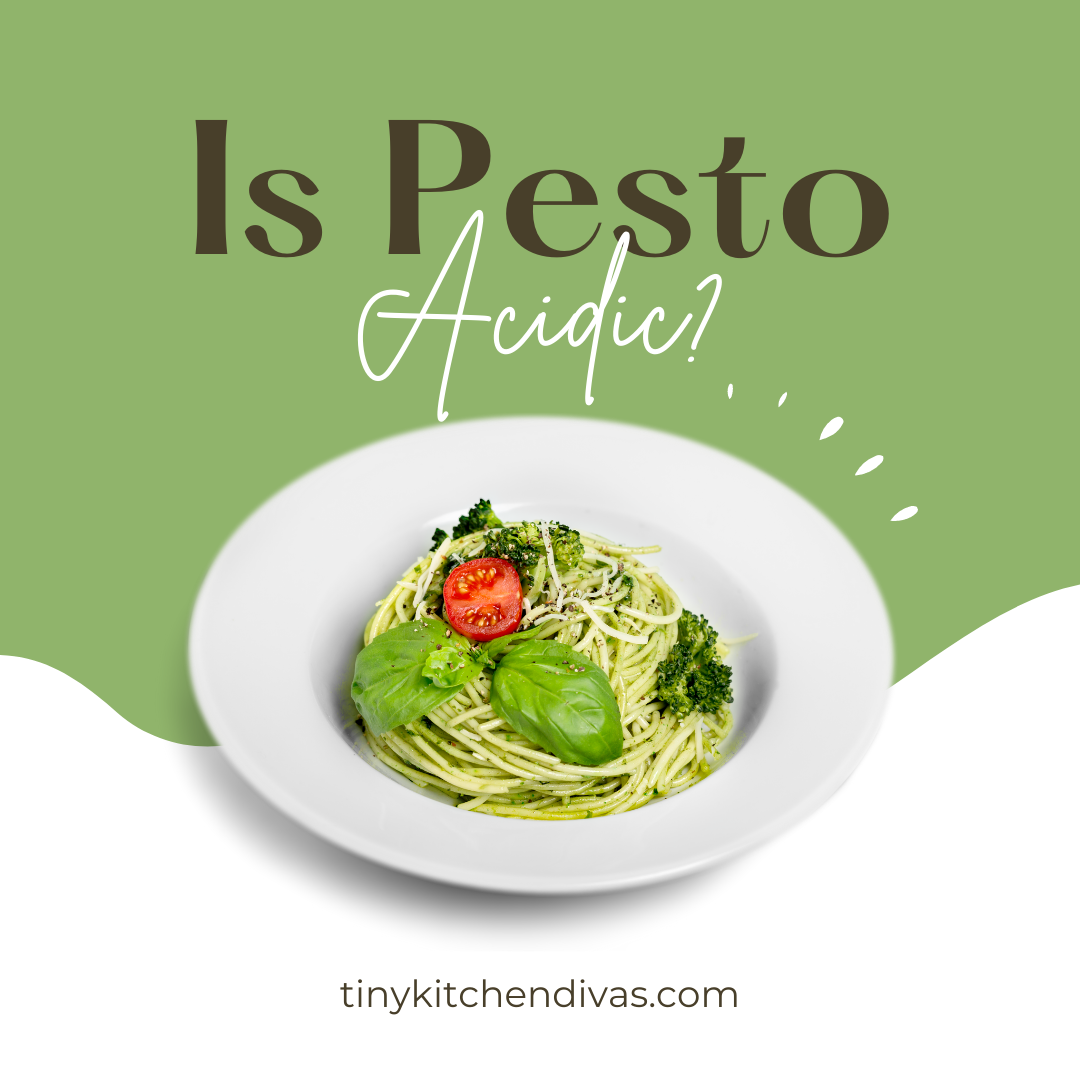“Pesto,” having its origin in Genoa, Italy, translates to ‘pound or crush’ in Italian. It is a traditional thick sauce made from the following ingredients:
- Basil leaves
- Garlic
- Pine nuts
- Parmesan cheese
- Olive oil
- Sea salt
Pesto is a part of the Mediterranean diet and is commonly served with simple pasta or used to season the chicken, fish, and other meats both before and after cooking.
Pesto can also be used as a dip, sandwich spread, or salad dressing.
Nutritional value of pesto sauce
A 1/4th cup serving typically contains 63 grams of pesto sauce and 263 calories. It has the following macronutrients:
- Protein: 6 grams
- Fat: 24 grams
- Carbohydrates: 6 grams
Health benefits of pesto sauce
Pesto is rich in unsaturated fats and also known as ‘heart-healthy’ because of its cholesterol-lowering action. Basil, olive oil and nuts give pesto its high antioxidant properties, which have a protective effect on your cells and DNA. These antioxidants protect the cells from oxidative damage by free radicals.
As pesto sauce is part of the Mediterranean diet, it can be linked to the several health benefits the Mediterranean diet offers. Some of the important ones are as follows:
- Pesto sauce lowers the risk of heart disease, heart attack, and stroke.
- It can lower the risk of breast, pancreatic, liver, and stomach cancers.
- It also reduces the risk of chronic conditions like diabetes.
Other micronutrients like calcium, potassium, and iron help in the proper functioning of the organs and tissues.
Does consuming pesto sauce cause acidity?
Whether or not pesto sauce is acidic can be determined by its main individual components. Basil leaves soothe an irritated esophagus and stomach lining produced by high stomach acid, thus helping to relieve acidity. When it comes to olive oil, according to a study titled “Review: Beneficial Health Effects of Olive Leaves Extracts,” published in the Journal of Natural Sciences Research, olive extracts can cause heartburn/acidity in some patients.
Raw garlic can also cause acid to enter the esophagus and harm the lining, resulting in heartburn in some patients. Pine nuts don’t cause acidity and can be consumed safely in GERD patients. Parmesan cheese has a pH above 5 and can also be enjoyed by those with GERD.
There haven’t been any concrete studies done on the acidity of pesto. However, looking at the individual ingredients’ acidity-causing potential, pesto seems to work well in normal people. Among those experiencing GERD or chronic acid reflux disease, pesto can be enjoyed by most because of its low acidic potential.
Can pesto sauce be used for acid reflux?
Gastroesophageal Reflux Disease (GERD) is a disorder wherein the acid passes from the stomach into the esophagus, causing heartburn. People suffering from GERD can replace spicy sauces with pesto sauce for a flavorful meal. It is a good alternative to tomato sauce, widely used to make pasta and pizzas. It is because tomato sauce is spicy with a pH of 4.6 or below and is thus known to be acidic.
According to a blog published by Harvard, pesto sauce can help reduce acid reflux in case of chronic heartburn.
Bottomline
Pesto is a well-liked sauce enriched with healthy fats and antioxidants. It consists of ingredients that help reduce the risk of many chronic ailments, as mentioned earlier. This makes it a healthy food choice.
Pesto can be consumed safely by those without the acidity. Additionally, it is okay to consume pesto sauce when one is not allergic to any of the components present in the sauce. However, if you are allergic or have a known history of acid reflux on consuming any of the individual ingredients in pesto, it is best to avoid it. You can also talk to a healthcare professional to learn more about its health effects.
References
Aviv, J. (2017, January 31). The surprising new food rules to banish acid reflux. Daily Mail. https://www.dailymail.co.uk/health/article-4174090/The-surprising-new-food-rules-banish-acid-reflux.html
Brusie, C. (2016, May 26). Garlic and acid reflux: Is it safe? Healthline. https://www.healthline.com/health/digestive-health/garlic-acid-reflux
FoodData central. (n.d.). Usda.Gov. Retrieved May 28, 2022, from https://fdc.nal.usda.gov/fdc-app.html#/food-details/171579/nutrients
Google Scholar. (n.d.). Google.Com. Retrieved May 28, 2022, from https://scholar.google.com/scholar?hl=en&as_sdt=0%2C5&q=olive+oil+acid+reflux&btnG=
Lifestyle Desk. (2021, August 2). Suffering from acid reflux? Try these tips to fight it naturally. News18. https://www.news18.com/news/lifestyle/suffering-from-acid-reflux-try-these-tips-to-fight-it-naturally-4037447.html


